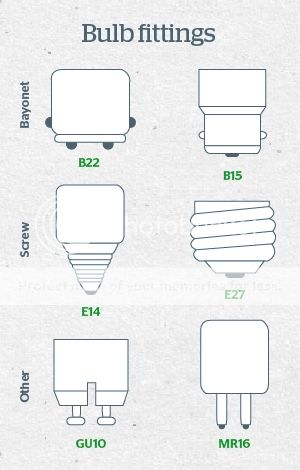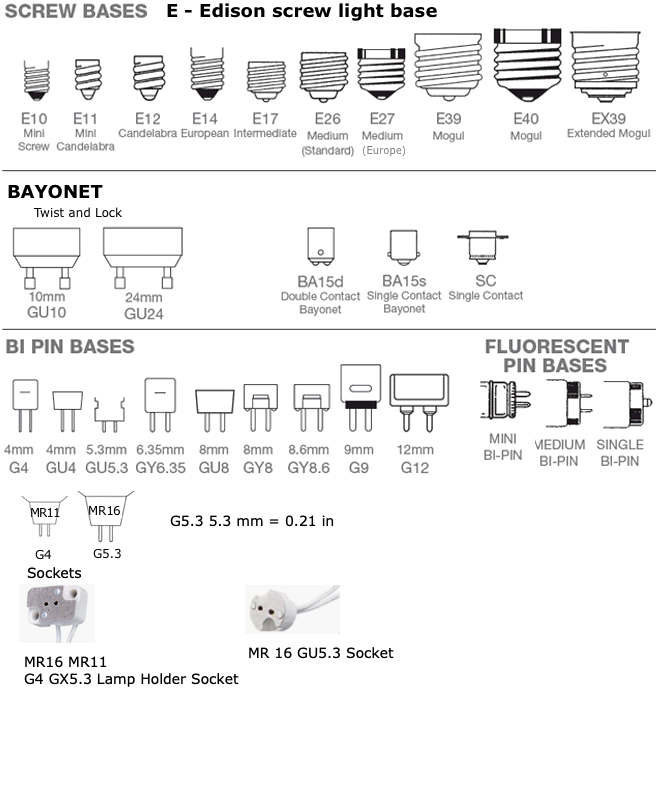I must admit years ago I used miniature Edison screw (MES) small Edison screw (SES) Edison screw (ES) and large Edison screw (LES) and to call SES E14 or ES E27 went against the grain. However I am told the USA did not go metric so today SES and E14 are no longer the same although close enough to fit.
I got use to using BAY15d, BA15d, and BA15s (all classed as SBC) as far easier than remembering the part numbers which would also include things like coloured glass when in the motor industry and the same caps are used with mains lamps. Today car bulbs are as bad as house bulbs with 85 volt head lamp bulbs becoming common.
As to MR16, Ballast, Driver, and Low Voltage using the words to describe other than what they originally referred to is bound to cause problems. I have E27, E14, GU10, GZ10, and G5.3 bulbs which are all classed as MR16 compatible, i.e. 2 inch diameter although very few have the multi-faceted reflector, I have electronic ballast units which can't be used with LED lamps, I still cringe when some one calls a constant voltage power supply a driver, and sticking a lamp marked low voltage in a 230 volt supply should not be a problem.






